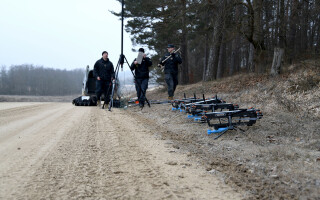Cyber warfare key factor in U.S. defense satellite market growth
NewsMay 29, 2018

SANTA CLARA, Calif. Frost & Sullivan analysts are predicting the U.S. defense satellite market to reach $30.3 billion by 2023, growing at a compound annual growth rate (CAGR) of 10.3 percent.
The expansion is due to intensive cyber warfare driving Department of Defense (DoD) officials to spend toward hardening its satellite infrastructure through program funding, modernization strategies, and innovative counter and offensive space initiatives. Competition is also expected to heighten as demand for shorter development times and access to additional launch windows surges.
“As a nation with the largest number of satellites, the U.S. DoD is taking every precaution to protect against adversaries’ evolving threats and ensure that space systems are constantly operational,” says John Hernandez, Senior Industry Analyst, Defense at Frost & Sullivan. “Resilient satellite communications, PNT, and reliable weather data are imperative for successful military operations as well as ensuring robust missile detection.”
Frost & Sullivan’s recent analysis titled "U.S. Defense Satellite Market, Forecast to 2023," assesses disruptive trends, drivers and restraints, market share, and the competitive environment for players such as L-3 Communications, Lockheed Martin, United Launch Services LLC, Raytheon, and Harris Corp. Spending forecasts, key findings, and engineering measurements for segments such as asset defense, asset development, communications, detection/warning, ground elements, meteorological, surveillance, and position, navigation, and time (PNT) are provided.
“The slow development of DoD satellite systems, funding delays, and potential US tariffs on aluminum and steel imports are key concerns impacting market growth, despite significant opportunities,” Hernandez adds.
The analysis finds five trends creating growth opportunities in the market include:
- The two largest spending areas in 2017 went toward the communications segment at 40.7 percent and the PNT segment at 30.6 percent;
- The U.S. Air Force is projected to spend a cumulative $28.04 billion on the defense satellite market by 2023;
- PNT having the most stable spending because it affects both military and commercial interests;
- Development of satellite materials that will last longer in space and safeguarding signals through encryption methodologies; and
- Defense seeking more partnerships with the private sector to streamline research and development and accelerate program timelines.
For more information, visit the http://frost.ly/2hu.





